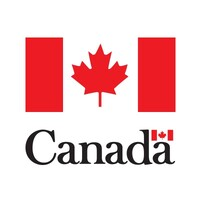Filter By
Data Projects
Environment Canada has identified a need for sound information on current youth opinion pertaining to climate change in order to direct policy and communications efforts. In light of this need, Ipsos-Reid was commissioned to conduct opinion research among young Canadians (from 16 to 25 years of age) to establish a baseline measurement of their awareness, receptivity and behaviour on issues related to climate change.
Almost no public opinion research has been conducted to date on the general topic of contaminated sites at a national level. The purpose of this research is to measure Canadian public opinion on the issue of contaminated sites to provide a baseline from which future studies can be conducted to measure changes in opinions in response to government communications initiatives.
The American Trends Panel is Pew Research Center’s primary source of survey data for U.S. public opinion research. It is a multimode, probability-based survey panel made up of roughly 10,000 adults who are selected at random from across the entire United States. All surveys are conducted in English and Spanish.
A study was conducted by Health Canada to survey the general public, including non-smokers and smokers, in the provinces of Newfoundland and Labrador, and British Columbia. The survey was conducted to measure knowledge, attitudes, and behaviours of the population, both smokers and non-smokers, to serve as a baseline against which to measure and evaluate the impact of the smoking bans. A total of 1,468 adults, including 800 smokers, were surveyed in British Columbia on attitudes toward second-hand smoke and smoking in public places, during the same timeframe, also using a random-digit dial sampling process and trained, bilingual interviewers to administer the questionnaire. The margin of error for samples of this size is also plus or minus 2.6 percentage points, 19 times in 20 for the overall sample and plus or minus 3.5 per cent for smokers. The questionnaire was largely replicated from previous iterations with other provinces, although some items were changed based on the needs and laws in each province.
A study was conducted by Health Canada to survey the general public, including non-smokers and smokers, in the provinces of Newfoundland and Labrador, and British Columbia. The survey was conducted to measure knowledge, attitudes, and behaviours of the population, both smokers and non-smokers, to serve as a baseline against which to measure and evaluate the impact of the smoking bans. A total of 1,468 adults, including 800 smokers, were surveyed in British Columbia on attitudes toward second-hand smoke and smoking in public places, during the same timeframe, also using a random-digit dial sampling process and trained, bilingual interviewers to administer the questionnaire. The margin of error for samples of this size is also plus or minus 2.6 percentage points, 19 times in 20 for the overall sample and plus or minus 3.5 per cent for smokers. The questionnaire was largely replicated from previous iterations with other provinces, although some items were changed based on the needs and laws in each province.
A study was conducted by Health Canada to survey the general public, including non-smokers and smokers, in the provinces of Newfoundland and Labrador, and British Columbia. The survey was conducted to measure knowledge, attitudes, and behaviours of the population, both smokers and non-smokers, to serve as a baseline against which to measure and evaluate the impact of the smoking bans. A total of 1,468 adults, including 800 smokers, were surveyed in British Columbia on attitudes toward second-hand smoke and smoking in public places, during the same timeframe, also using a random-digit dial sampling process and trained, bilingual interviewers to administer the questionnaire. The margin of error for samples of this size is also plus or minus 2.6 percentage points, 19 times in 20 for the overall sample and plus or minus 3.5 per cent for smokers. The questionnaire was largely replicated from previous iterations with other provinces, although some items were changed based on the needs and laws in each province.
The main objective of the Canadian Tobacco and Nicotine Survey is to gather information about the prevalence of cigarette smoking, vaping, and cannabis use. Until 2017, Statistics Canada conducted the Canadian Tobacco, Alcohol and Drugs Survey (CTADS), which collected data on tobacco as well as alcohol and drug use in Canada. In 2019, the Canadian Alcohol and Drugs Survey (CADS) was conducted to collect data on alcohol and drug use independently from the Canadian Tobacco and Nicotine Survey (CTNS), which was conducted primarily to collect data on tobacco and nicotine use.
The main objective of the Canadian Tobacco and Nicotine Survey is to gather information about the prevalence of cigarette smoking, vaping, and cannabis use. Until 2017, Statistics Canada conducted the Canadian Tobacco, Alcohol and Drugs Survey (CTADS), which collected data on tobacco as well as alcohol and drug use in Canada. In 2019, the Canadian Alcohol and Drugs Survey (CADS) was conducted to collect data on alcohol and drug use independently from the Canadian Tobacco and Nicotine Survey (CTNS), which was conducted primarily to collect data on tobacco and nicotine use.
The Children’s People and Nature Survey (C-PaNS) provides information on how children and young people experience and think about the natural environment.









.jpg)
.jpg)

